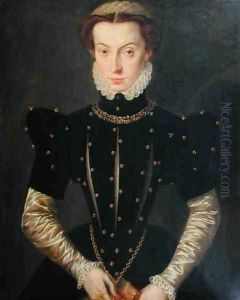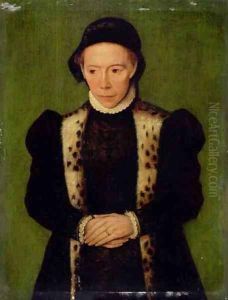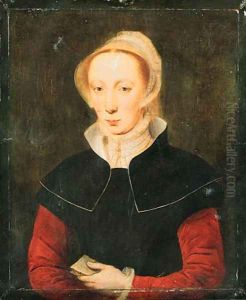Katharina van Hemessen Paintings
Katharina van Hemessen was a prominent Flemish Renaissance painter, born in 1528 in the city of Antwerp, then part of the Habsburg Netherlands. She is particularly noted for her detailed and refined portrait work, as well as being one of the earliest female Flemish artists to achieve recognition in her own time. Katharina was the daughter of Jan Sanders van Hemessen, a notable painter himself, who was instrumental in her artistic training. This familial tutelage was a common practice for women artists of the period, who were often barred from formal apprenticeships in artists' guilds due to their gender.
Van Hemessen is best known for her small-scale portraits, which are remarkable for their attention to detail, nuanced depiction of character, and the sophisticated use of color. In 1548, she painted what is considered to be the first self-portrait of an artist at work, 'Self-Portrait of the Artist at the Easel,' a groundbreaking work that showcases not only her technical skill but also her understanding of individuality and self-representation. This painting is often cited for its introspective quality and the direct gaze of the artist, which engages the viewer in a personal dialogue.
Throughout her career, Katharina van Hemessen enjoyed the patronage of Mary of Hungary, sister of Emperor Charles V, and served at her court. This connection provided her with significant commissions and allowed her to gain a foothold in the art circles of the time, which was a remarkable achievement for a woman. Despite her success, the details of her later life are somewhat obscure. Records indicate that she married Christian de Morien, an organist, in 1554, and moved to Spain, where she likely continued her work, though few Spanish period pieces have been attributed to her.
Katharina van Hemessen's contributions to Renaissance art are significant not only for her technical achievements but also for her role in paving the way for future generations of women artists. Her work is preserved in several major museums, and she is remembered as a pioneering figure who challenged the gender norms of her time to carve out a successful career in the male-dominated art world. The exact date of her death is unknown, but she is believed to have died sometime after 1587.


